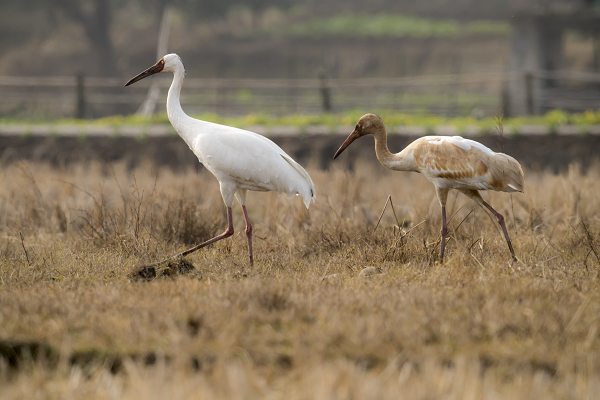Latest news
Siberian cranes have seen a huge population rebound in Poyang Lake, where theyoverwinter. But lack of natural food sources means they are dependent on human assistance, bringing them into conflict with farmers and destroying livelihoods.

Recently, Guo Yumin, professor at the School of Ecology and Nature Conservation at the Beijing Forestry University was interviewed by NewsChina on the topic.
The Siberian crane is an lnternational Union for Conservation of Nature (lUCN) CriticallyEndangered species under first-class state protection in China. The lUCN estimates there are 3,500-4,000 individuals. According to the lnternational Crane Foundation (ICF), it has tworegional population groups. The western/central population winters in lran and breeds in thesouthern parts of the Ob River in Russia. Since the 1960s, the population of the species has decreased dramatically due to habitat loss and deteriorating environments.
The eastern population breeds in northeastern Siberia and migrates from the Yakutian tundra of Russia across eastern China to Poyang Lake. After protection measures in China, includingbans on hunting, were instituted, the population has increased. "According to our most recent survey including ground count and observations from December2021 to February 2022 in Jiangxi, Shandong, Hunan, Hubei and Anhui provinces, where Siberian cranes winter, the population of the species has reached 5.616, much more than 4.000, the number estimated by the IUCN. The new data suggests a population revival," Guo Yumin told NewsChina. The overwintering habitat in China is vital for the population revival of the species.
Apart from official conservation efforts, Guo posits the main reason is agricultural modernizationand mechanization.“Developed agriculture leaves more leftover grain in fields, providingsubstantial amounts of food for wildlife, including birds”Guo said.

Besides, as for the crop damages caused by Siberian cranes, ProfessorGuo thinks the issue is overstated. Many conservationists NewsChinainterviewed including Guo stated that some natural habitats have been encroached upon byhumans, and they are in turn shifting to agricultural lands as a way to survive. Ilf theoverwintering area for Siberian cranes cannot provide enough energy from food for migratingcranes, they might not be able to travel to their breeding grounds, dying during the journey, olnot have enough stored nutrition to breed successfully.
“I believe humans should have the tolerance to live together with our wild friends as far as itdoesn't affect our health and our security. To allow Siberian cranes to eat farm residues is a wayto compensate them for our former occupation of their habitats" Guo said. As for the relationshipbetween cranes and people, it depends on whether locals perceive the cranes as a threat or afavorable presence. Guo said some places, such as Dongying Wetland in the Yellow River Deltaare thinking of planting lotus roots to attract Siberian cranes.












